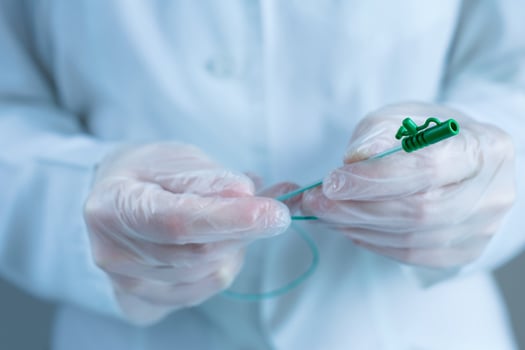
A microdiscectomy is the minimally invasive form of a traditional discectomy, which is a surgical procedure used to treat herniated or bulging discs in the spine. The procedure involves the removal of a small portion of the affected disc, which helps to relieve pressure on the nerves and alleviate pain. While a microdiscectomy is generally considered safe and effective, patients often have questions about the specifics of the procedure, including whether they will need to have a catheter during the surgery.
A catheter is a thin, flexible tube that is inserted through the urethra and into the bladder to drain urine. Catheters are commonly used in medical procedures, including back surgery procedures, that require a patient to be sedated or under anesthesia, as they prevent the bladder from becoming overfilled during the procedure. However, the use of a catheter during a microdiscectomy is not always necessary and depends on a variety of factors. This article offers details about whether and when catheters are used during microdiscectomies.
Duration of the Procedure
One of the factors that can influence whether a catheter is used during a microdiscectomy is the duration of the procedure. In general, a shorter procedure (less than two hours) is less likely to require a catheter than a longer procedure. This is because the longer a patient is under anesthesia, the more likely he or she is to experience urinary retention, which happens when the bladder is unable to empty itself properly.
In general, microdiscectomy procedures do not require catheters. The surgery typically takes between one and two hours to complete, which is not long enough to require a catheter in most cases. Additionally, most patients are able to control their bladder function after the surgery and can use the bathroom without assistance.
Patient History
Another factor that can influence the use of a catheter during a microdiscectomy is the patient's medical history. A patient who has a history of urinary problems, such as urinary incontinence or urinary tract infections, may be more likely to require a catheter during the procedure. This is because the patient may be at higher risk for experiencing urinary retention, and a catheter can prevent this from occurring.
The surgical team may also take into consideration the patient's age, as older patients may be more likely to experience urinary retention than younger patients. Additionally, a patient who is obese or has other medical conditions that make it difficult to move around may be more likely to require a catheter during the procedure.
What Happens when a Catheter Is Used
While the use of a catheter during a microdiscectomy is not always necessary, patients who do require catheters can expect to have them inserted either before or after their procedure. Before surgery, the catheter will be inserted while the patient is still awake, and local anesthesia will be used to numb the area around the urethra. The catheter will then be secured in place and left in the bladder until after the procedure is complete.
After the microdiscectomy, the catheter will be removed once the patient is awake and able to urinate on his or her own. In some cases, patients may experience temporary difficulty urinating after their catheters are removed, but this usually resolves within a few days. It is important for patients to drink plenty of fluids after their microdiscectomies to flush out any residual anesthesia and to prevent urinary tract infections.
If a patient does require a catheter during a microdiscectomy, there are some potential risks and side effects to be aware of. These may include discomfort or pain during insertion or removal of the catheter, urinary tract infections, and bladder spasms. However, these risks are generally low, and the benefits of the catheter in preventing bladder complications may outweigh any potential side effects. Patients who have questions or concerns about the use of catheters during their microdiscectomies should speak with their surgeon or healthcare provider for more information.
The need for a catheter during a microdiscectomy will vary according to each patient’s specific needs. Recovery time also varies among individuals and depends on factors such as whether the patient has a large hole in the outer ring of the disc after surgery. If the hole in the disc is larger than a standard pencil eraser, the patient has a significant risk of experiencing a reherniation. Patients with a large hole in the outer ring of the disc are more than twice as likely to reherniate after surgery. These reherniations often require additional surgery or even a larger spinal fusion operation. Barricaid is a bone-anchored device shown to reduce reherniations by closing the hole in the disc after a discectomy, and 95 percent of Barricaid patients did not undergo a reoperation due to reherniation in a 2-year study timeframe. This treatment is done immediately following the discectomy—during the same operation—and does not require any additional incisions or time in the hospital.
If you have any questions about the Barricaid treatment or how to get access to Barricaid, you may ask your doctor or contact us at 844-288-7474.
For full benefit/risk information, please visit: https://www.barricaid.com/instructions.


Comments